Dinner
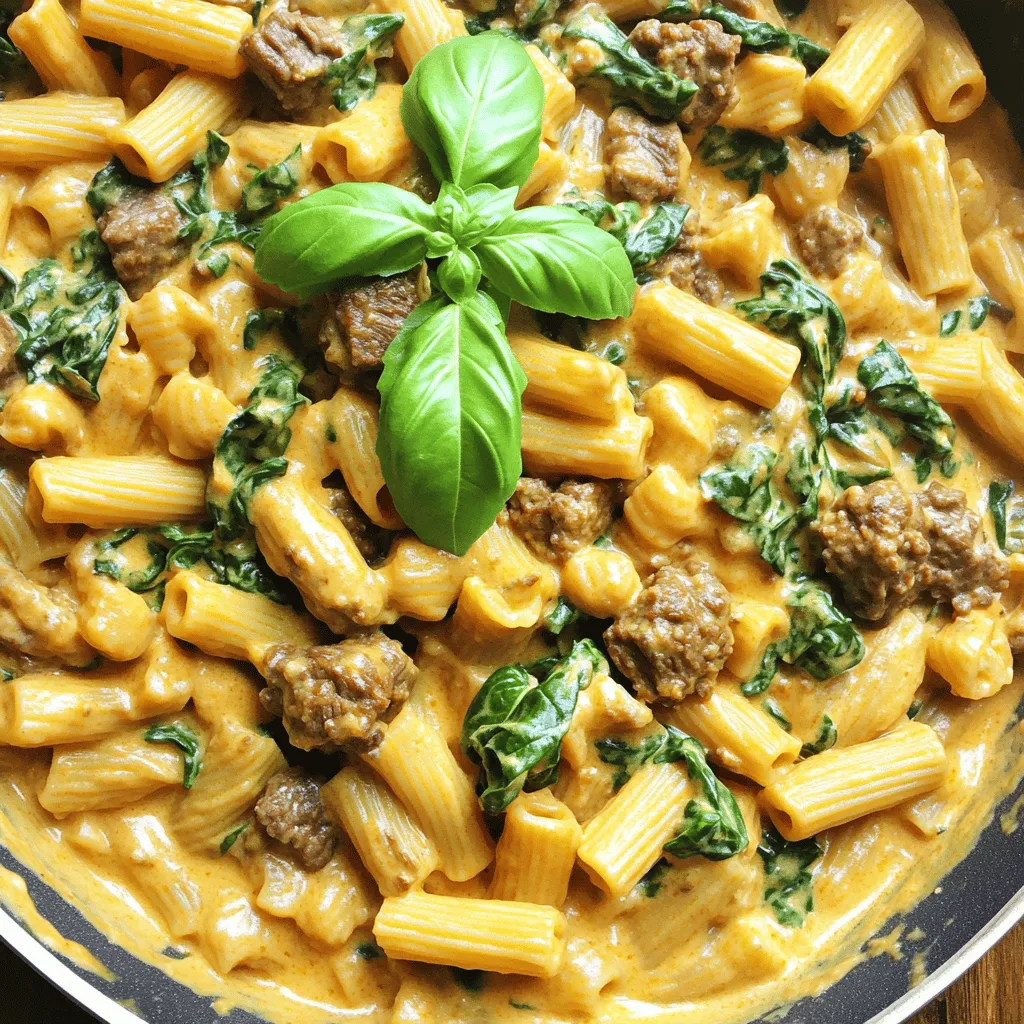
High Protein Creamy Beef Pasta Quick and Flavorful Meal
Looking for a quick meal that’s both tasty and nutritious? My High Protein Creamy Beef Pasta has you covered! With lean ground beef, whole grain
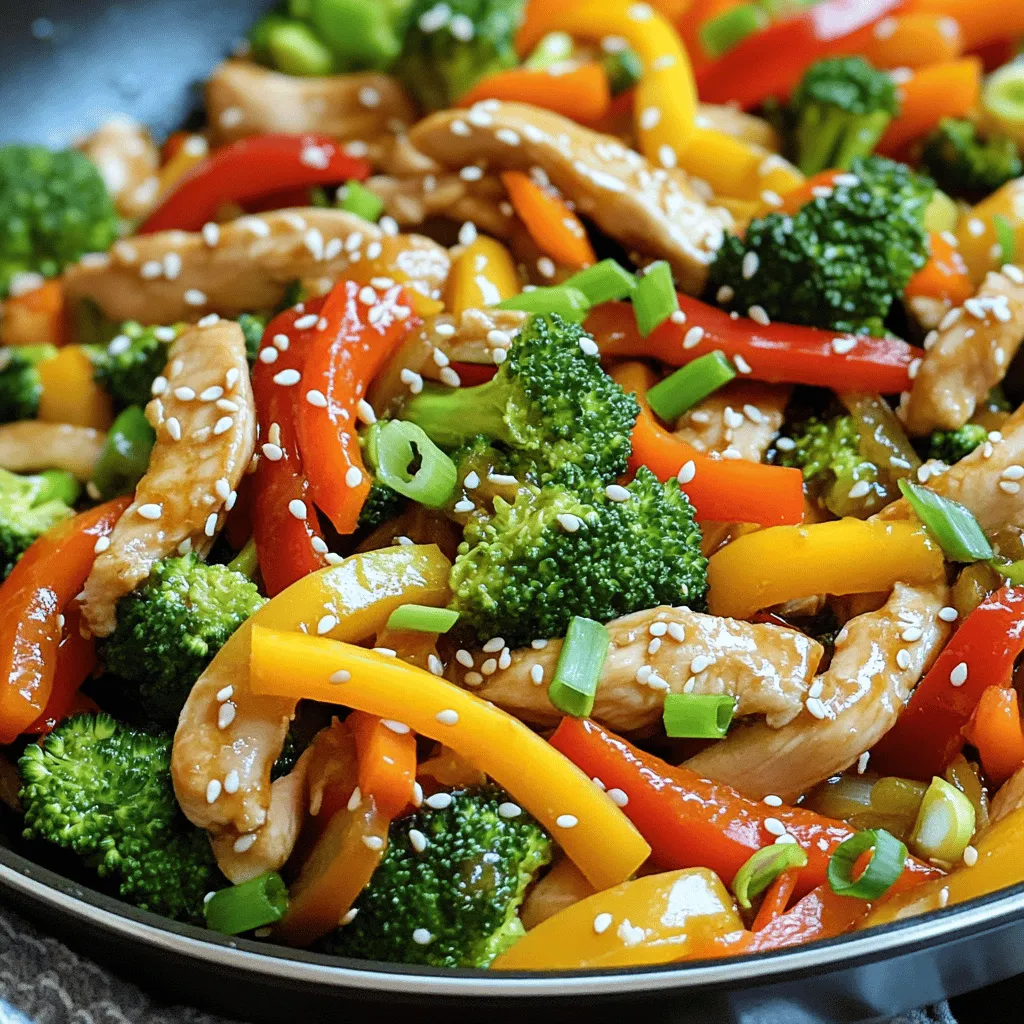
Easy Chicken Stir Fry Quick and Tasty Meal Idea
Looking for a quick and tasty meal idea? You’re in the right place! My Easy Chicken Stir Fry is perfect for busy nights when you
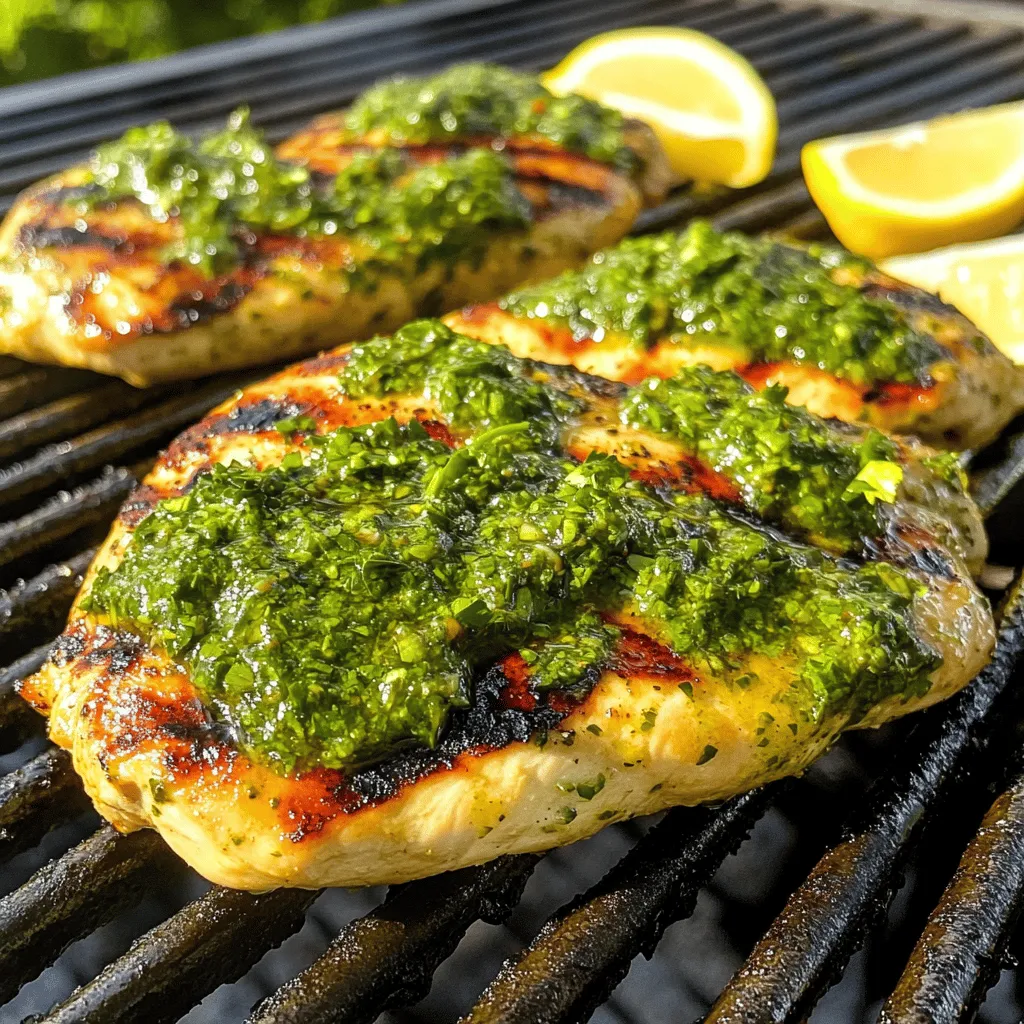
Easy Grilled Chimichurri Chicken Breast Recipe Guide
Ready to impress your taste buds? In this Easy Grilled Chimichurri Chicken Breast Recipe Guide, I’ll show you how to make juicy, flavorful chicken in
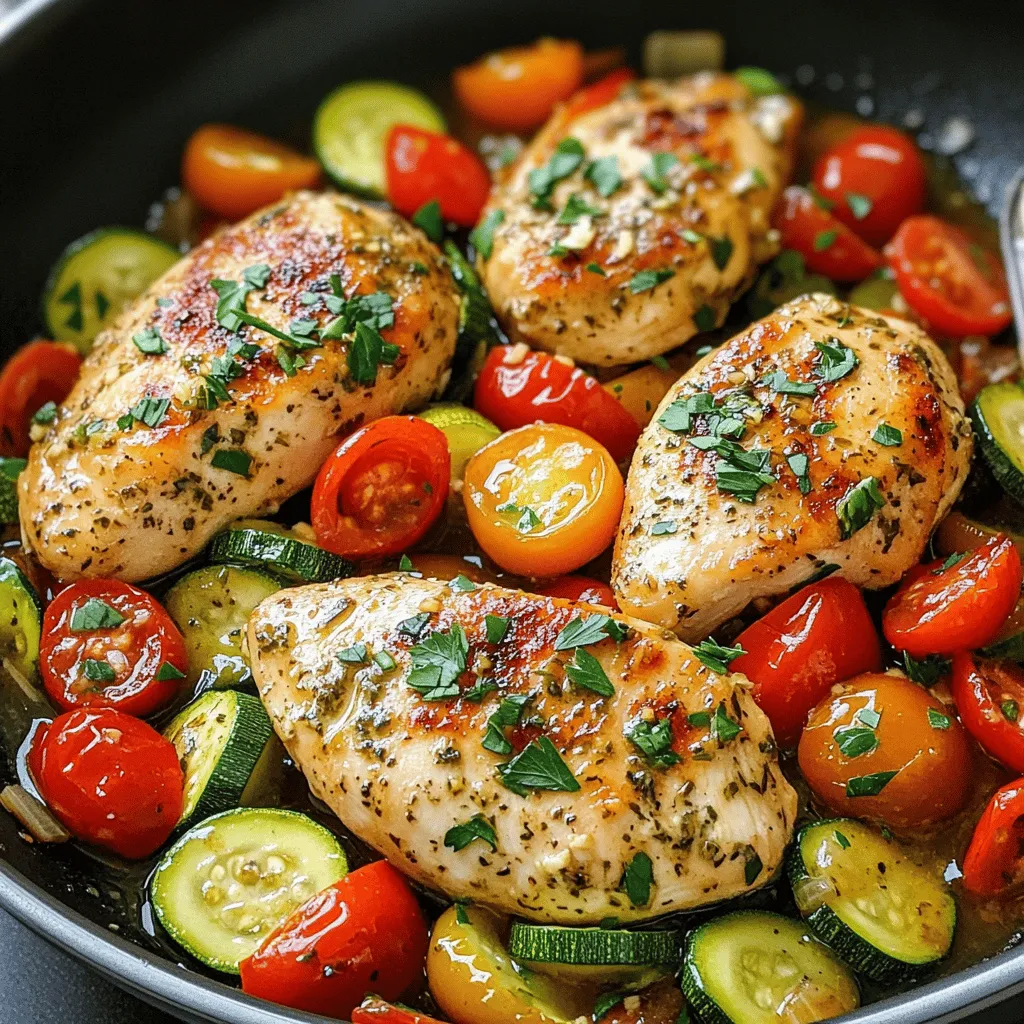
30-Minute Chicken Dinner Quick and Flavorful Delight
Looking for a quick, tasty dinner that won’t keep you in the kitchen for hours? This 30-Minute Chicken Dinner is your answer. Packed with flavor
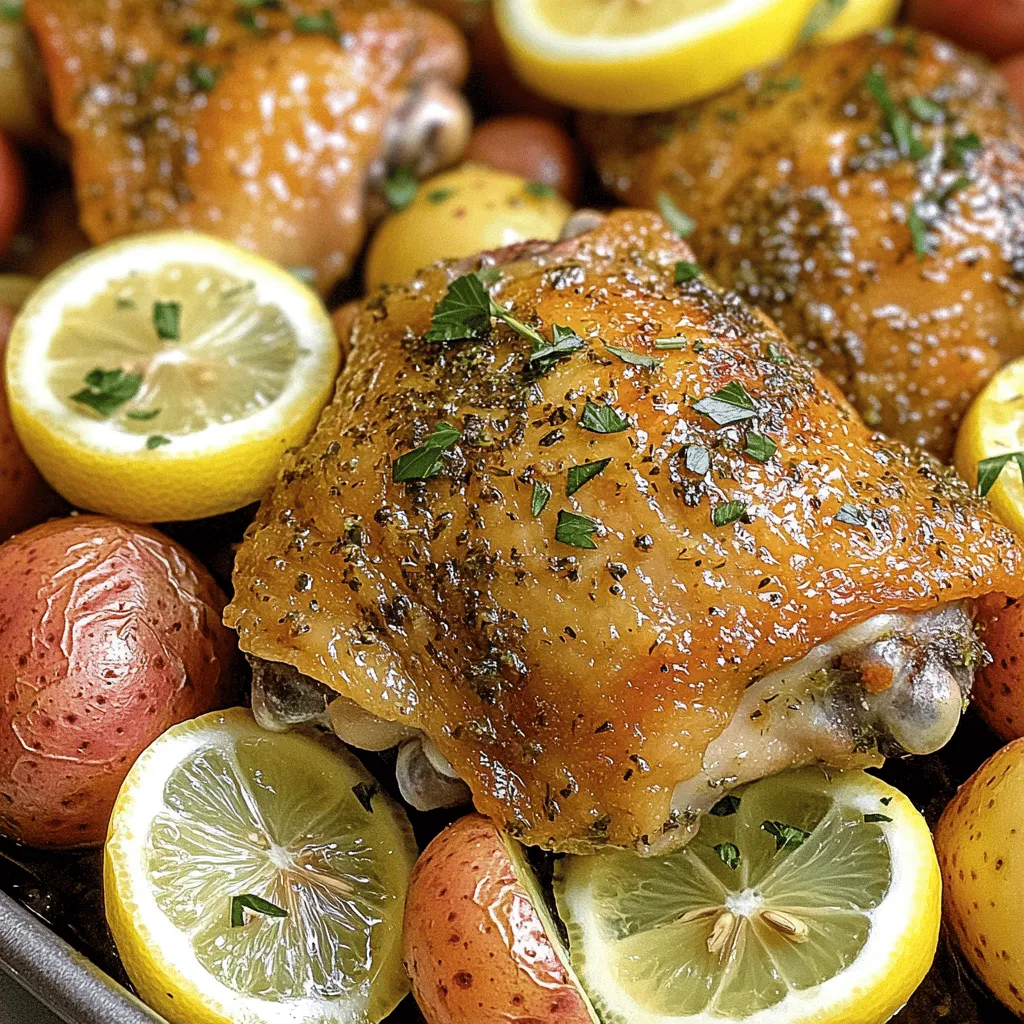
Satisfying Sheet Pan Chicken and Potatoes Recipe
Looking for a quick and tasty dinner? This Satisfying Sheet Pan Chicken and Potatoes recipe is your answer! I’ll guide you through easy steps that
![To make garlic honey butter green beans, gather these fresh ingredients: - 1 lb (450g) fresh green beans, trimmed - 3 tablespoons unsalted butter - 3 cloves garlic, finely minced - 2 tablespoons honey - 1 tablespoon soy sauce - Salt and freshly ground black pepper to taste - 1/4 teaspoon red pepper flakes (optional for a spicy kick) - Chopped fresh parsley for a vibrant garnish Fresh ingredients make a big difference in flavor. Fresh green beans are crunchy and bright. When you pick them, look for beans that snap easily. They should be a deep green color and free from blemishes. Fresh garlic adds a strong aroma and rich taste. Always choose local and seasonal produce when possible. This ensures you will get the best flavors and nutrients. If you need to substitute honey, maple syrup works well. It gives a sweet touch without losing flavor. For soy sauce, tamari is a great choice. It has a similar taste and is gluten-free. You can also try coconut aminos for a lighter, sweeter option. These swaps keep your dish tasty while fitting your needs. To make garlic honey butter green beans, we start with fresh green beans. First, bring a pot of salted water to a boil. Once boiling, add the green beans and blanch them for about 3-4 minutes. This makes them bright and tender. Next, drain them and plunge them into ice water. This step stops the cooking and keeps the beans crisp. Then, melt butter in a skillet over medium heat. When it bubbles, add minced garlic and sauté for 1-2 minutes. Stir constantly to prevent burning. If it turns brown, it will taste bitter. After the garlic becomes fragrant, add honey and soy sauce. Mix well to create a smooth sauce. Now, toss in the blanched green beans. Coat them well with the garlic honey butter sauce. Season with salt, pepper, and optional red pepper flakes for heat. Cook for another 2-3 minutes to heat through. Finally, garnish with chopped parsley for color before serving. Blanching green beans is simple if you follow these steps: - Always use a large pot for boiling water. - Add salt to the water for flavor. - Monitor the time closely. Overcooking can lead to mushy beans. - Use ice water right after boiling. This keeps the beans crunchy and bright green. - Drain well before cooking them in the skillet. Sautéing garlic is easy with these tips: - Keep the heat at medium. High heat can burn garlic quickly. - Stir constantly while cooking. This helps it cook evenly. - Use fresh, minced garlic for the best flavor. - If you see it start to brown, lower the heat immediately. - Remove it from the pan if you finish cooking before adding other ingredients. For the full recipe, refer to the section above. To boost the taste of garlic honey butter green beans, use fresh ingredients. Fresh beans have a crisp texture and bright flavor. Add a squeeze of lemon juice for a tangy twist. You can also sprinkle some lemon zest on top for extra zing. If you love herbs, try adding thyme or rosemary while cooking. They pair well with garlic and honey. For a unique touch, consider a splash of balsamic vinegar at the end. It adds depth and complexity to the dish. Cooking time is key for the perfect texture. If you like your green beans firm, blanch them for just 3 minutes. For softer beans, increase the time to 4 minutes. Keep an eye on them while cooking. You want them bright green and tender but not mushy. After blanching, quickly shock them in ice water. This will stop the cooking process and help keep their color. When you sauté them later, adjust the cooking time based on your preference. Garlic honey butter green beans are great for meal prep. You can blanch the beans a day before serving. Store them in the fridge in an airtight container. When you're ready to cook, simply sauté them in the garlic butter sauce. This method saves time and keeps the flavors fresh. You can also make the sauce ahead of time. Just reheat it while you cook the beans. This way, you’ll have a quick and tasty side dish ready to enjoy. For the full recipe, check the earlier section. {{image_4}} You can mix in other veggies to enhance your garlic honey butter green beans. Carrots, bell peppers, or snap peas work great. Just chop them into small pieces. Blanch them with the green beans for a few minutes. This adds color and flavor to your dish. You can also try adding mushrooms for an earthy taste. The mix of textures makes every bite exciting. If you like heat, try the spicy version! Start with the red pepper flakes in the recipe. For more spice, add sliced jalapeños or sriracha sauce. Just a little will do! The heat pairs well with the sweetness of honey. It creates a tasty contrast. This spicy twist will impress anyone at your dinner table. You can switch the honey for other sweeteners if you prefer. Maple syrup is a great option. It adds a different flavor but still keeps the sweetness. Agave nectar is another choice. It blends well with the garlic and butter. If you want a sugar-free option, try stevia or monk fruit sweetener. Just adjust the amount to your taste. Each sweetener brings a unique twist to the dish. For the full recipe, check out the details above. To keep your garlic honey butter green beans fresh, store them in an airtight container. Let the beans cool to room temperature before sealing them. This prevents steam from building up inside the container, which can lead to sogginess. Place the container in the fridge where they will stay good for about 3 days. When you’re ready to eat your leftovers, reheating them correctly is key. I suggest using a skillet over medium heat. Add a splash of water to help steam the beans. This method keeps them crisp and bright. Stir them gently for about 5 minutes, until they are heated through. Avoid microwaving them, as this can make them mushy. If you want to store the green beans for a longer time, freezing is a great option. First, blanch the beans as you do in the recipe. After cooling them in ice water, drain and dry them well. Then, spread them out on a baking sheet in a single layer and freeze until solid. Once frozen, transfer the beans to a freezer bag, removing as much air as possible. They can last up to 3 months in the freezer. To use, thaw them in the fridge overnight before reheating. For the full recipe, feel free to check this link: [Full Recipe]. Yes, you can use frozen green beans. They work well in this dish. Just remember, frozen beans are already blanched. You can skip the blanching step. Garlic honey butter green beans pair nicely with many dishes. They go great with grilled chicken or fish. You can also serve them with rice or quinoa. These beans add a tasty and colorful touch to any plate. To adjust for larger servings, simply increase the amount of green beans and other ingredients. For every extra pound of beans, use more butter, garlic, honey, and soy sauce. Keep the same cooking method for the best flavor. You can find the full recipe above for easy reference. This blog post explored making garlic honey butter green beans. We covered ingredient freshness, cooking tips, and variations to try. Always use fresh ingredients for the best taste. Blanch your beans just right for the perfect crunch. You can switch ingredients if needed. Remember, meal prep and storage matter too! Enjoy experimenting with different flavors and techniques. These beans can complement many dishes. Your cooking can shine with these tips! Now go and create a delightful dish that everyone will love.](https://tossedflavors.com/wp-content/uploads/2025/07/f57230b6-ad12-450e-9bf7-d9b276287f25.webp)
Garlic Honey Butter Green Beans Flavorful Side Dish
Looking for a vibrant side dish that brightens any meal? Garlic Honey Butter Green Beans are your answer! With their sweet and savory punch, these
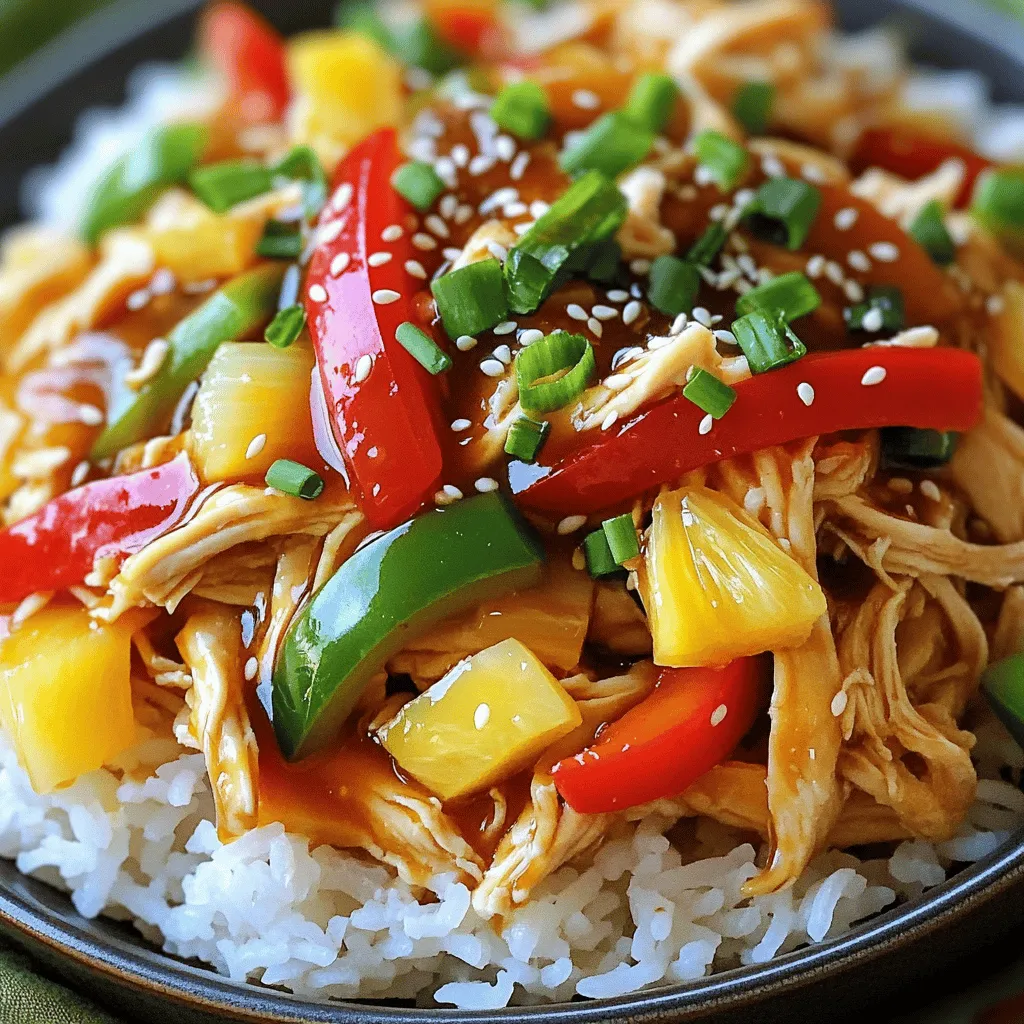
Sweet Hawaiian Crock Pot Chicken Flavorful Family Meal
Welcome to the world of Sweet Hawaiian Crock Pot Chicken—a dish that’s sure to become a family favorite! With its mix of sweet and savory
![- 4 chicken thighs, bone-in and skin-on - 1/2 cup balsamic vinegar - 1/4 cup apricot preserves - 2 tablespoons Dijon mustard - 1 tablespoon extra virgin olive oil - 3 cloves garlic, finely minced - 1 teaspoon fresh rosemary, finely chopped (or 1/2 teaspoon dried rosemary) - Sea salt and freshly ground black pepper to taste - Fresh apricot slices and rosemary sprigs for garnish The chicken thighs are the heart of this dish. They provide rich flavor and juicy texture. I love using bone-in, skin-on thighs for this recipe. The bones keep the meat moist, while the skin crisps up nicely during cooking. Balsamic vinegar and apricot preserves create a sweet and tangy glaze. This mix adds depth to the chicken. The Dijon mustard brings a hint of spice that balances the sweetness. Garlic and rosemary give the dish fragrant notes that elevate the flavors. You can use other chicken cuts if you prefer. Skinless chicken breasts work but may cook faster. Drumsticks are also a great choice for a different texture. If you don’t have balsamic vinegar, try red wine vinegar or apple cider vinegar. Honey or peach preserves can replace apricot preserves. These swaps will still yield a tasty result. - Oven-safe skillet - Mixing bowls and measuring utensils An oven-safe skillet is key for this recipe. It lets you sear the chicken and transfer it straight to the oven. Mixing bowls are important for blending the marinade. Accurate measuring utensils ensure you get the right balance of flavors. Explore the [Full Recipe] for detailed steps to make this dish. To make the glaze, mix together a few key ingredients. In a bowl, combine the balsamic vinegar, apricot preserves, Dijon mustard, olive oil, minced garlic, and chopped rosemary. Whisk until everything blends well. This mixture gives the chicken a sweet and tangy flavor. Marinating the chicken is crucial. I recommend marinating for at least 1 hour. For even better taste, let it sit for 4 hours. The longer the chicken marinates, the more flavor it absorbs. Start by searing the chicken thighs. Heat a large oven-safe skillet over medium-high heat. Remove the chicken from the marinade, but save the marinade for later. Place the chicken in the hot skillet, skin-side down. Sear for about 5 to 7 minutes until the skin is golden and crispy. Flip the thighs and sear the other side for about 3 to 4 minutes. Next, bake the chicken. Pour the reserved marinade over the seared thighs. Transfer the skillet to the preheated oven set at 375°F (190°C). Bake for 25 to 30 minutes. Make sure the chicken reaches an internal temperature of 165°F (74°C). For the final touch, broil the chicken for 5 minutes. This step caramelizes the glaze, enhancing the flavors. Watch closely to prevent burning. When it’s time to serve, arrange the chicken on a large platter. Drizzle it with the glaze from the skillet. For a beautiful presentation, top with fresh apricot slices and sprigs of rosemary. Pair this dish with roasted vegetables or a fresh garden salad. These sides balance the meal nicely. If you want to try something different, serve the chicken over rice or quinoa for a hearty option. Enjoy your delicious Balsamic Apricot Glazed Chicken Thighs! For the full recipe, check out the complete guide above. To get that perfect caramelized finish on your chicken thighs, you need a hot pan. Start by searing the chicken skin-side down. This step creates a crispy layer. After searing, pour the marinade over the chicken and switch to broiling in the last few minutes. This high heat will enhance the glaze, giving it that shiny look. Balancing sweetness and acidity is key. Use equal parts balsamic vinegar and apricot preserves. You can adjust these to your taste. If you like it sweeter, add more apricot preserves. If you want more tang, add extra vinegar. Cooking time can vary based on the size of your chicken thighs. For thicker pieces, add a few more minutes to the oven time. Always check the internal temperature. The chicken should reach 165°F (74°C). If you have smaller pieces, reduce the cooking time to avoid drying them out. To avoid dry chicken, do not overcook. Let the chicken rest for a few minutes after taking it out of the oven. This helps keep the juices inside, making your chicken juicy and tender. You can boost the flavor by adding herbs and spices. Consider using thyme or sage for added depth. A pinch of garlic powder can also elevate the dish. Marinating is another great way to infuse flavors. The longer you marinate the chicken, the more flavor it absorbs. Aim for at least one hour, but four hours will give you a richer taste. You can use the Full Recipe for more details on marinating techniques. {{image_4}} For a twist, try different fruit preserves. You can use peach, mango, or even fig. Each fruit brings its own unique taste. This change can refresh the dish and surprise your guests. Want heat? Add chili flakes or hot sauce to the glaze. This will spice things up! The heat balances well with the sweet apricot. Just a pinch can make a big difference. You can grill or bake these chicken thighs. Grilling adds a smoky flavor that many love. Simply marinate the chicken and cook it on medium heat until done. If you prefer baking, follow the recipe steps. An Instant Pot or slow cooker works too! Just remember to adjust the cooking time. This method can make the chicken very tender. This chicken can shine on its own, but it also excels as a salad topping. Chop the cooked thighs and toss them over mixed greens. Add some nuts for crunch! You can also use the chicken in wraps or sandwiches. Pair it with fresh veggies and some cheese. The glaze will add a burst of flavor to your meal. For more details on making this dish, check the Full Recipe. To store leftovers, let the chicken cool completely. Place it in an airtight container. This helps keep it fresh. You can store it in the fridge for up to 3 days. If you want to enjoy it longer, consider freezing it. To freeze portions, wrap the chicken well in plastic wrap. Then, put it in a freezer bag. This prevents freezer burn. Balsamic apricot glazed chicken thighs can last up to 3 months in the freezer. When you're ready to eat, thaw the chicken in the fridge overnight. To reheat, bake it in the oven at 350°F until heated through. For meal prep, you can cook this chicken ahead of time. It works well for lunches or quick dinners. Pair it with sides like rice, quinoa, or roasted veggies for a balanced meal. These sides add color and nutrition, making your plate pop. Feel free to switch it up with different grains or greens each week. This keeps your meals exciting and fresh! For the full recipe, check back to create this delicious dish. To check if the chicken is done, use a meat thermometer. The internal temperature should reach 165°F (74°C). This ensures the chicken is safe to eat and juicy. You can also check doneness by cutting into the chicken. The juices should run clear, not pink. Make sure to avoid touching bones, as they can give false readings. Yes, you can marinate the chicken overnight. This longer marination adds more flavor and helps the chicken stay moist. If you have time, I recommend marinating for 4 to 8 hours for the best taste. Just don’t go over 24 hours, as it can change the texture. This dish goes well with many sides. Here are some ideas: - Roasted vegetables like carrots and brussels sprouts - Creamy mashed potatoes or garlic mashed cauliflower - A fresh garden salad with a light vinaigrette For drinks, try pairing with a crisp white wine or a sparkling water with lemon. These choices balance the sweet and tangy flavors of the chicken. For the complete recipe, check out the [Full Recipe]. In this blog post, we explored a delicious recipe for balsamic apricot glazed chicken thighs. We covered key ingredients, cooking steps, and helpful tips for perfecting the dish. Don't forget to try different flavor variations and cooking methods to suit your taste. Remember, marinating enhances flavor, while proper cooking ensures juicy chicken. Store your leftovers well for future meals. Experiment and enjoy making this dish as part of your meal prep. Your kitchen adventures will surely inspire tasty meals for you and your family!](https://tossedflavors.com/wp-content/uploads/2025/07/1244201f-fe98-4e94-b31a-3012e96c99a5.webp)
Balsamic Apricot Glazed Chicken Thighs Flavor Boost
Looking to spice up your dinner lineup? Balsamic Apricot Glazed Chicken Thighs will delight your taste buds with their sweet and tangy flavors. This dish
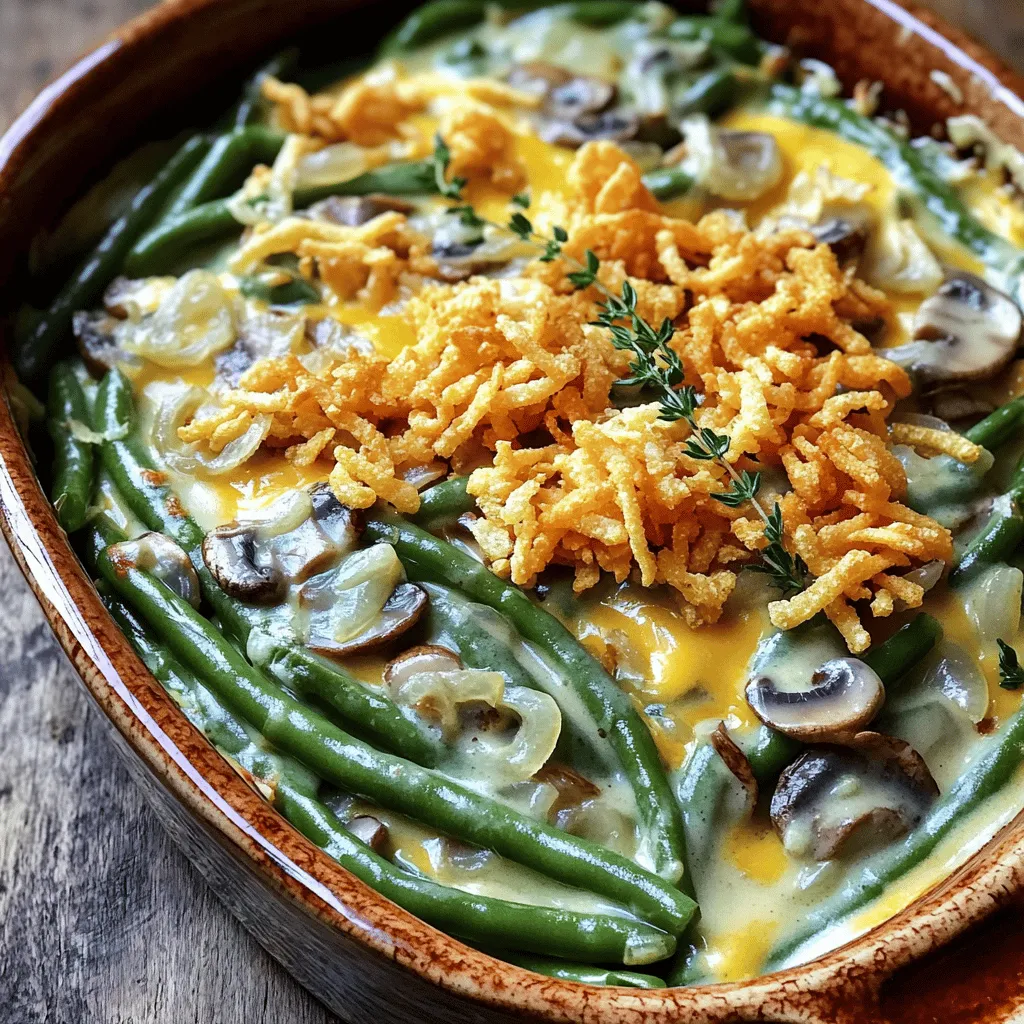
The Best Green Bean Casserole Savory Comfort Dish
Are you ready to elevate your holiday feast with a classic dish? This “The Best Green Bean Casserole” combines fresh green beans, creamy sauce, and
![- 4 boneless, skinless chicken breasts - 1/2 cup balsamic vinegar - 3 tablespoons honey - 2 tablespoons extra virgin olive oil - 3 cloves garlic, finely minced - 1 teaspoon dried oregano - 1 teaspoon sea salt - 1/2 teaspoon freshly ground black pepper - Fresh basil leaves, for garnish - Optional: cherry tomatoes and arugula To convert measurements for larger quantities, simply multiply. For example, if you want to serve eight people, double each ingredient. If you need alternatives, here are some options: - Chicken: Use thighs for a juicier option. - Honey: Maple syrup works well for sweetness. - Vinegar: Try red wine vinegar if balsamic is not available. - Garlic: Use garlic powder in a pinch, but fresh is best. These swaps keep the dish tasty while meeting dietary needs. Always adjust based on what you have at home. Enjoy the process! You can find the full recipe to guide your cooking. To make the balsamic glaze, start by mixing balsamic vinegar and honey. In a small saucepan, combine 1/2 cup of balsamic vinegar with 3 tablespoons of honey. Heat this mixture over medium heat until it simmers. Once it simmers, lower the heat to low. Cook it gently for about 10-15 minutes. Stir it every so often. You want it to thicken into a nice glaze. When it’s thick, remove it from the heat and let it cool. Next, let’s marinate the chicken. In a bowl, whisk together 2 tablespoons of olive oil, 3 minced garlic cloves, 1 teaspoon of dried oregano, 1 teaspoon of sea salt, and 1/2 teaspoon of black pepper. This mix brings great flavor to your chicken. Place your 4 boneless, skinless chicken breasts in a large resealable bag or a shallow dish. Pour the marinade over the chicken. Make sure every piece is coated well. Seal the bag or cover the dish. Refrigerate it for at least 30 minutes. For even better flavor, let it marinate for up to 2 hours. Now it’s time to grill! Preheat your grill to medium-high heat. This step is key for perfect grilling. While the grill heats up, take the marinated chicken out of the fridge. Discard any leftover marinade. Grill each chicken breast for about 6-7 minutes per side. Cook until the internal temperature reaches 165°F (75°C). You want a nice char on the outside. In the last few minutes of grilling, brush the chicken with the balsamic glaze. This adds extra flavor and a beautiful finish. Once done, remove the chicken from the grill and let it rest for a few minutes. This helps keep it juicy when you slice it. To grill chicken perfectly, aim for medium-high heat. This temperature helps the chicken cook evenly. Use a grill thermometer to check the heat. A good range is 375°F to 450°F. To check if the chicken is done, use a meat thermometer. The safe internal temperature is 165°F. Insert the thermometer into the thickest part of the chicken. If it reads 165°F, your chicken is ready to eat! Fresh herbs can greatly improve the taste of your chicken. Try adding chopped rosemary or thyme to the marinade. Basil also pairs well with the balsamic glaze. You can also use spices to boost flavor. Consider adding smoked paprika for a smoky taste. A pinch of red pepper flakes can add some heat. Just remember not to overdo it! One mistake to avoid is over-marinating the chicken. If you marinate for too long, the chicken can become mushy. Stick to 30 minutes to 2 hours for the best results. Another key tip is to let the chicken rest after grilling. This allows the juices to settle. If you slice the chicken right away, it may dry out. Let it rest for about 5 minutes before cutting. For the complete recipe, check out the Full Recipe section. {{image_4}} You can use different chicken cuts for your grilled chicken with balsamic glaze. Chicken thighs have more fat, making them juicy and flavorful. They are a great choice if you want something rich. Chicken breasts are leaner and cook quicker. They are perfect if you prefer a lighter meal. For bone-in chicken, you need to adjust your cook time. Bone-in cuts take longer to cook, so grill them for about 10-12 minutes per side. Always check that the internal temperature reaches 165°F (75°C) to ensure safety. Adding fruits to your glaze can enhance the flavor. Peaches and apricots bring a sweet twist that pairs well with balsamic. Chop them and add them to the glaze as it simmers. This will create a delicious, fruity version. You can also experiment with different vinegars. Try apple cider vinegar or red wine vinegar for unique tastes. Each vinegar brings its own flavor, changing the dish in fun ways. Pair your grilled chicken with fresh salad or roasted vegetables. A crisp salad with mixed greens brightens the plate. Roasted veggies like zucchini or bell peppers add color and nutrition. For a creative presentation, stack the chicken slices on a plate. Drizzle with extra balsamic glaze for a beautiful look. Add a sprig of basil for color. You can even serve it with cherry tomatoes and arugula for a fresh touch. For the full recipe, check out [Full Recipe]. To keep your grilled chicken with balsamic glaze fresh, follow these simple steps: - Refrigerating leftovers effectively: Let the chicken cool down to room temperature. Then, store it in an airtight container. This helps prevent moisture loss. You can keep it in the fridge for up to four days. - Freezing grilled chicken with balsamic glaze: If you want to keep it longer, freeze the chicken. Wrap each piece in plastic wrap and place them in a freezer bag. This way, they stay fresh for up to three months. Remember to label the bags with the date for easy identification. To enjoy your grilled chicken again, you need to reheat it right: - Best methods for reheating grilled chicken: The oven is great for reheating. Preheat it to 350°F (175°C). Place the chicken on a baking sheet. Cover it with foil to keep it moist. Heat for about 15-20 minutes or until warm. You can also use a microwave for quick reheating. Just place the chicken in a microwave-safe dish and cover it. Heat it in short bursts until warm. - Maintaining flavor and juiciness while reheating: To keep the chicken juicy, add a splash of water or broth when reheating. This creates steam, which helps retain moisture. If you have leftover balsamic glaze, brush some on before serving to boost the flavor. These storage and reheating tips will help you enjoy your grilled chicken with balsamic glaze even more. For the full recipe, visit the [Full Recipe] link. To ensure chicken is safe to eat, check the internal temperature. The chicken must reach 165°F (75°C) for safe consumption. Use a meat thermometer for accuracy. Insert it into the thickest part of the chicken without touching bone. This step ensures even cooking and safety. Also, cut into the chicken to check that the juices run clear, not pink. Yes, you can prepare the balsamic glaze ahead. Just store it in an airtight container. Keep it in the fridge for up to a week. When ready to use, simply reheat the glaze on low heat. Stir it gently until it reaches the right consistency. Making the glaze ahead saves time on busy days. Grilled chicken with balsamic glaze pairs well with many sides. Here are some tasty options: - Garlic mashed potatoes: Creamy and rich in flavor. - Steamed green beans: Crisp and fresh. - Mixed green salad: Light and refreshing with a tangy dressing. - Quinoa: Nutty and full of protein, it complements the chicken well. - Roasted vegetables: Sweet and savory flavors balance the dish. Feel free to mix and match according to your taste! In this blog post, I shared a tasty grilled chicken recipe with balsamic glaze. You learned about the ingredients, preparation steps, and expert tips for grilling. I also covered meal variations and storage ideas. Remember, grilling chicken can be simple and fun. Don’t hesitate to experiment with flavors and techniques. With practice, you can make a perfect dish that impresses everyone. Enjoy your cooking journey, and let the flavor shine!](https://tossedflavors.com/wp-content/uploads/2025/07/9c263cd9-3848-4d73-a73c-08ebf213f55a.webp)
Grilled Chicken with Balsamic Glaze Easy Recipe Guide
Looking to impress your family and friends with a delicious meal? This Grilled Chicken with Balsamic Glaze Easy Recipe Guide is just what you need!